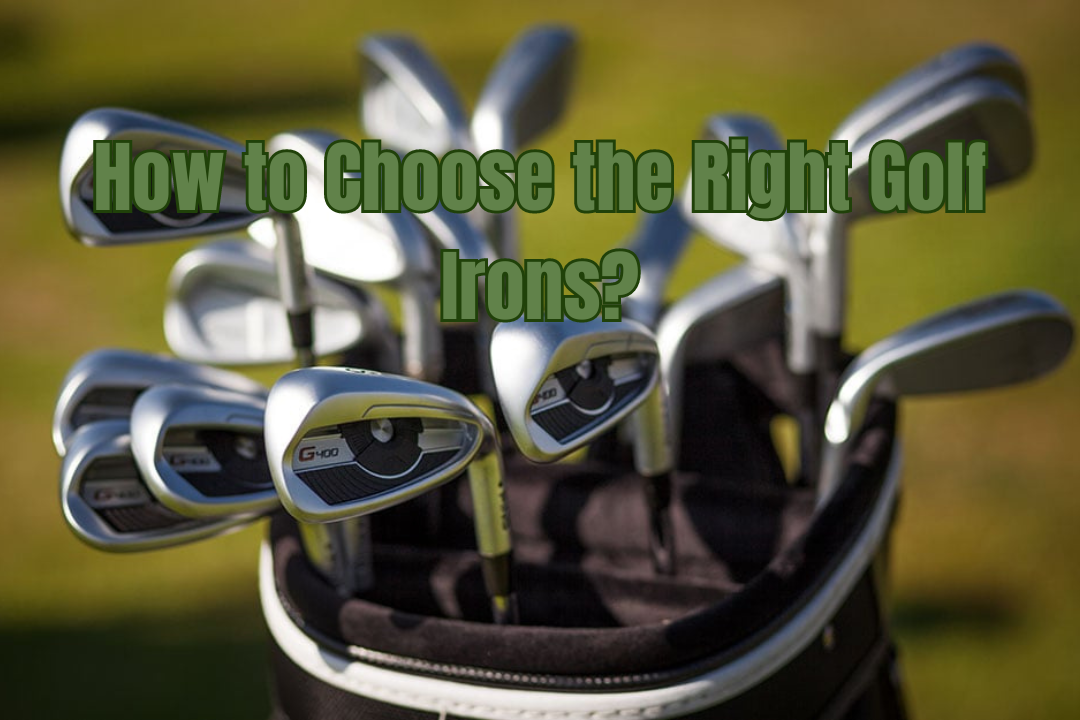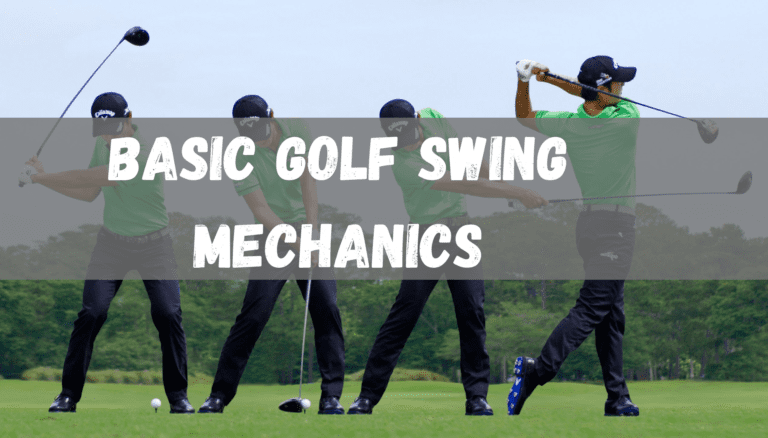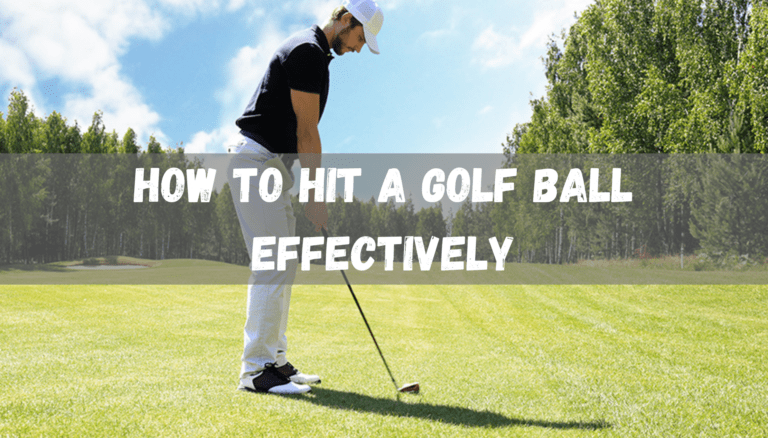How to Choose the Right Golf Irons?
Golf is a game of precision, patience, and the perfect swing. But let’s be honest, even the best swing in the world won’t get you far without the right clubs in your bag. Among all the equipment, choosing the right golf irons can feel like a daunting task. After all, irons are essential for those all-important approach shots and tricky situations on the fairway. Whether you’re a weekend warrior or a budding pro, picking the right set of irons could make all the difference in your game.
In this article, we’ll walk you through everything you need to know about how to choose the right golf irons. We’ll cover the basics, dive into different types of irons, and offer tips on finding the perfect fit for your swing. Whether you’re upgrading your set or buying irons for the first time, this guide is here to help. So, grab a cup of coffee (or your favorite drink) and let’s get started.
Understanding the Basics: What Are Golf Irons?
Before diving into the nitty-gritty of how to choose the right golf irons, it’s crucial to understand what they are. Golf irons are clubs used for shorter-range shots, typically from around 200 yards or less from the green. They’re numbered based on the loft (angle of the clubface), with lower numbers providing less loft and more distance, and higher numbers offering more loft for higher, shorter shots.
Types of Irons: Forged vs. Cast
When selecting golf irons, you’ll encounter two main types: forged and cast. Forged irons are made from a single piece of metal, offering a soft feel and greater control, which is often preferred by experienced golfers. Cast irons, on the other hand, are made by pouring molten metal into a mold, resulting in a harder club that’s typically more forgiving and better suited for beginners.
The Anatomy of a Golf Iron
Understanding the anatomy of a golf iron can make a world of difference in your selection process. Here’s a quick rundown:
- Clubhead: The clubhead is the business end of the iron, where contact with the ball occurs. It comes in various shapes and sizes, which we’ll explore later.
- Shaft: The shaft connects the clubhead to the grip. Its length and flexibility (or stiffness) can significantly impact your performance.
- Grip: The part you hold onto. A comfortable grip can improve your control over the club.
- Loft: Loft is the angle of the clubface, which affects the trajectory and distance of your shots.
Identifying Your Skill Level
Your skill level is one of the most important factors in how to choose the right golf irons. Are you just starting out, or do you consider yourself a seasoned player? Here’s a quick breakdown to help you identify your skill level:
- Beginner: Just starting out, looking for forgiving irons that are easy to hit.
- Intermediate: Some experience, looking to refine skills with irons that offer a balance between forgiveness and control.
- Advanced: Experienced, seeking irons that provide maximum control, workability, and feel.
Different Types of Irons and Their Uses
Long Irons (2-4 Iron)
Long irons have less loft and are used for longer distances, typically between 180 to 240 yards. They’re harder to hit, so many golfers, especially beginners, opt for hybrids instead.
Mid-Irons (5-7 Iron)
Mid-irons are the workhorses of your set, with a balance between distance and control. These are used for shots ranging from 130 to 180 yards.
Short Irons (8-9 Iron, Pitching Wedge)
Short irons offer the most loft and are used for high, short shots onto the green. Distances range from 70 to 130 yards. They’re easier to hit and offer great control, which is why many golfers love them for approach shots.
Blade Irons vs. Cavity Back Irons
Blade Irons
Blade irons, also known as muscle backs, are designed for experienced players. They have a thin, flat clubface and offer a high degree of control and shot-shaping ability, but they’re less forgiving.
Cavity Back Irons
Cavity back irons have a hollowed-out clubhead, making them more forgiving and easier to hit. They’re ideal for beginners and intermediate golfers, offering more distance and accuracy even on off-center hits.
The Importance of Shaft Selection
Steel vs. Graphite Shafts
When choosing the right golf irons, the shaft is just as important as the clubhead. Shafts come in two main materials: steel and graphite.
- Steel Shafts: Heavier and more durable, offering more control and consistency. Best suited for players with a faster swing speed.
- Graphite Shafts: Lighter and more flexible, providing greater swing speed and distance. Ideal for players with slower swing speeds or those seeking more power.
Shaft Flex
The flex of your shaft should match your swing speed. If your shaft is too stiff, you may struggle to get the ball airborne; too flexible, and you might lose control. Common flex options include extra stiff (X), stiff (S), regular (R), and senior (A).
Club Fitting: The Game-Changer
A custom club fitting can be a game-changer when figuring out how to choose the right golf irons. This process involves working with a professional who measures your swing, stance, and other factors to recommend the best irons for you. A proper fitting can improve your accuracy, consistency, and overall performance.
Length, Lie Angle, and Loft
During a fitting, adjustments can be made to the length of the shaft, the lie angle (the angle between the shaft and the ground when the club is at rest), and the loft. These tweaks ensure the irons suit your swing style, height, and posture.
Testing Irons Before You Buy
Don’t just take the salesperson’s word for it—test the irons before buying them. Many golf stores and courses have demo days where you can try out different brands and models. Pay attention to how the irons feel in your hands, the weight, balance, and how easy they are to hit.
What to Look for During Testing
- Feel: Does the club feel comfortable during your swing?
- Sound: Is the sound off the clubface pleasing, indicating solid contact?
- Performance: Are you getting the desired trajectory and distance?
Budget Considerations: What Can You Afford?
Let’s face it, golf isn’t a cheap sport. When deciding how to choose the right golf irons, your budget will play a significant role. High-end irons can cost a pretty penny, but there are plenty of budget-friendly options that offer great performance.
New vs. Used Irons
If you’re on a tight budget, consider buying used irons. You can often find gently used clubs at a fraction of the cost of new ones. Just make sure to inspect them for any signs of wear and tear.
Brand Preferences: Does It Really Matter?
Some golfers swear by certain brands, while others are more flexible. The truth is, all major golf brands offer high-quality irons, and what works best for you may not be the most popular or expensive option.
Popular Golf Iron Brands
- Titleist: Known for precision and feel, popular among low-handicap players.
- Callaway: Offers a range of irons that cater to all skill levels, known for innovation and forgiveness.
- TaylorMade: Well-regarded for its technology-driven designs that offer distance and control.
- Ping: Famous for custom fitting, producing irons that are highly customizable.
Considering Game Improvement Irons
What Are Game Improvement Irons?
Game improvement irons are designed to help you play better by offering features that make the game easier. They typically have a larger clubface, wider sole, and more perimeter weighting, which increases forgiveness on off-center hits.
Who Should Use Game Improvement Irons?
These irons are ideal for beginners and high-handicap golfers who need extra help getting the ball airborne and straight. If you’re struggling with consistency, game improvement irons could be a wise choice.
Maintaining Your Irons: Longevity Matters
Once you’ve chosen the right golf irons, you’ll want to keep them in top shape. Regular cleaning and maintenance can extend their lifespan and ensure they perform well for years to come.
Cleaning Tips
- Wipe Down After Every Round: Use a damp cloth to wipe off dirt and grass.
- Deep Clean Monthly: Use a brush and mild soap to clean the grooves and remove any buildup.
- Check for Damage: Regularly inspect your clubs for any signs of wear or damage, such as cracks in the shaft or clubhead.
Conclusion: Tying It All Together
Choosing the right golf irons is an art that blends personal preference, skill level, and a bit of science. By understanding the different types of irons, considering your swing speed, and possibly getting a custom fitting, you’ll be well on your way to finding the perfect set. Remember, the best golf iron for you is the one that feels right in your hands and helps you play your best on the course.
For more tips on improving your game, check out our guide on mastering the short game and explore our beginner’s guide to golf equipment. Additionally, for an external perspective on the latest golf iron reviews, visit Golf Irons Review.
Happy golfing, and may your next round be your best one yet!







